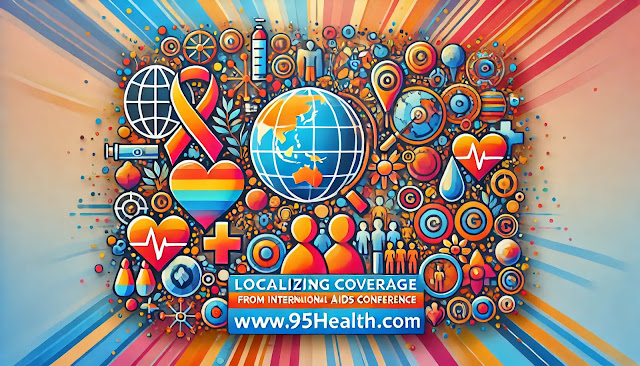The HIV Epidemic 40 Years On: Breakthroughs, Blind Spots, and New Challenges
As we mark 40 years since the identification of HIV, significant progress has been made, yet new challenges continue to emerge. Understanding the journey of the HIV epidemic helps us to appreciate the breakthroughs, recognize the ongoing issues, and prepare for future obstacles in the fight against HIV/AIDS.
Breakthroughs in HIV Treatment and Prevention
Antiretroviral Therapy (ART):
- One of the most significant advancements in HIV treatment has been the development of ART. These medications effectively control the virus, allowing individuals with HIV to live long, healthy lives. ART reduces the viral load to undetectable levels, meaning the virus cannot be transmitted to sexual partners, a concept known as “Undetectable = Untransmittable” (U=U).
Pre-Exposure Prophylaxis (PrEP) and Post-Exposure Prophylaxis (PEP):
- PrEP is a preventative medication for individuals at high risk of HIV, taken daily to prevent infection. PEP is an emergency treatment taken after potential exposure to HIV, within 72 hours, to prevent the virus from taking hold. These preventive measures have been crucial in reducing new infections.
Global Initiatives:
- Programs like the President’s Emergency Plan for AIDS Relief (PEPFAR) and the Global Fund have significantly contributed to the global response to HIV. These initiatives provide funding, resources, and support to countries heavily impacted by the epidemic, helping to expand access to testing, treatment, and prevention services.
Blind Spots and Ongoing Challenges
Stigma and Discrimination:
- Despite advancements in treatment and prevention, stigma and discrimination against people living with HIV remain significant barriers. These issues prevent many individuals from seeking testing and treatment, exacerbating the epidemic.
Disparities in Access to Care:
- Access to HIV care and treatment varies widely, both globally and within countries. In many low-income regions, healthcare infrastructure is inadequate, and many people do not have access to lifesaving medications. In the U.S., disparities exist among different racial, ethnic, and socioeconomic groups, with marginalized communities often experiencing higher rates of infection and lower access to care.
New Infections Among Key Populations:
- Certain groups, including men who have sex with men, transgender individuals, and people who inject drugs, continue to experience higher rates of new infections. Tailored prevention and treatment strategies are needed to address the specific needs of these populations.
Future Directions and Innovations
Long-Acting Treatments:
- Innovations in HIV treatment, such as long-acting injectable ART, offer new hope for improving adherence and reducing the burden of daily medication. These treatments, administered every few months, can simplify regimens and improve quality of life for people living with HIV.
Vaccine Development:
- Research into HIV vaccines is ongoing, with several promising candidates in various stages of clinical trials. An effective vaccine would be a game-changer in the fight against HIV, providing long-term protection and potentially eradicating the virus.
Integrated Healthcare Approaches:
- Addressing HIV requires a holistic approach that integrates HIV services with other healthcare needs, such as mental health, substance use treatment, and reproductive health. This comprehensive approach can improve health outcomes and ensure that individuals receive the full spectrum of care they need.
The fight against HIV/AIDS has seen remarkable progress over the past 40 years, but much work remains. By continuing to innovate, address disparities, and combat stigma, we can move closer to ending the HIV epidemic for everyone, everywhere.







